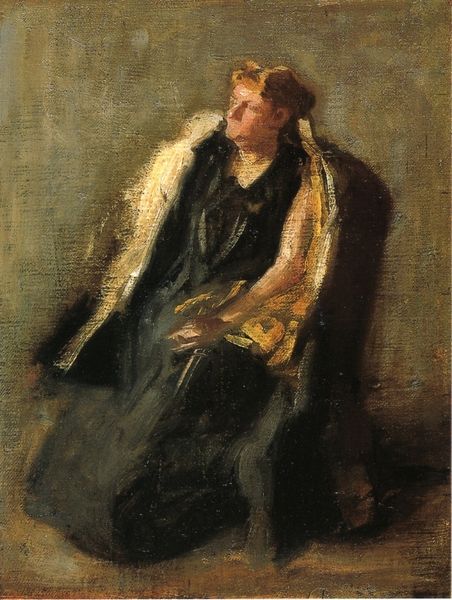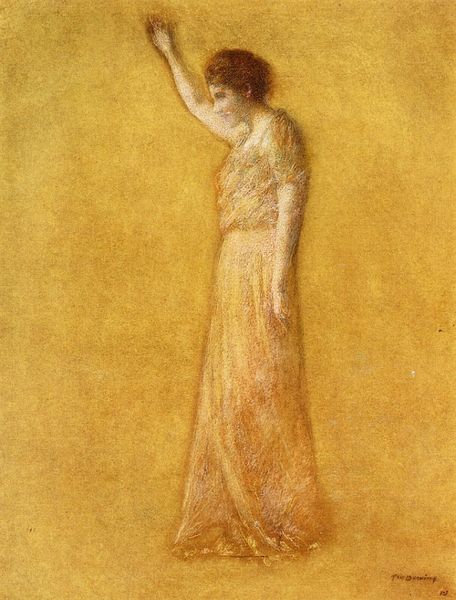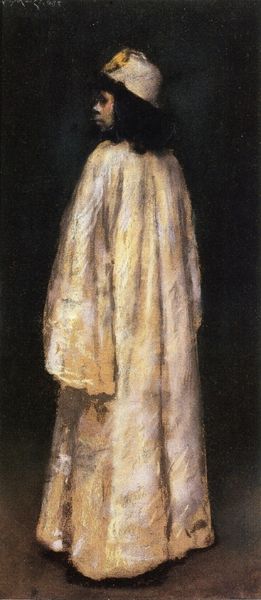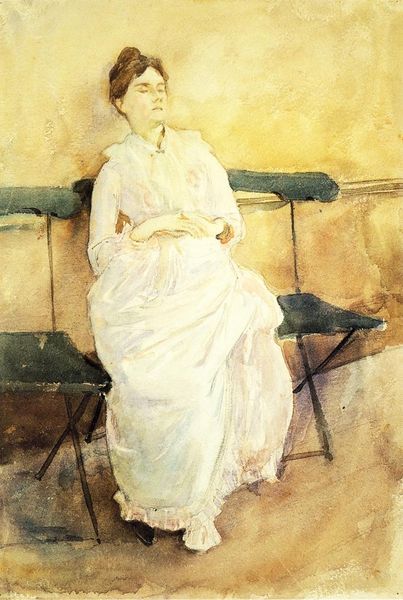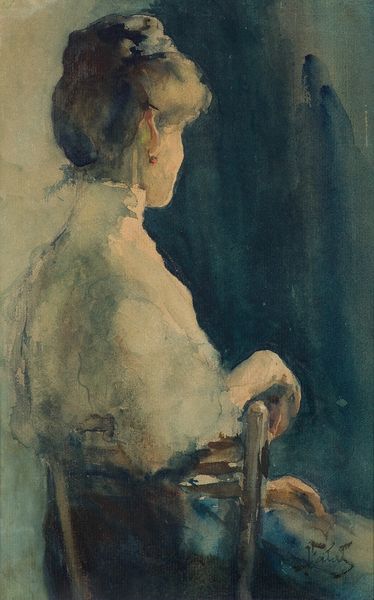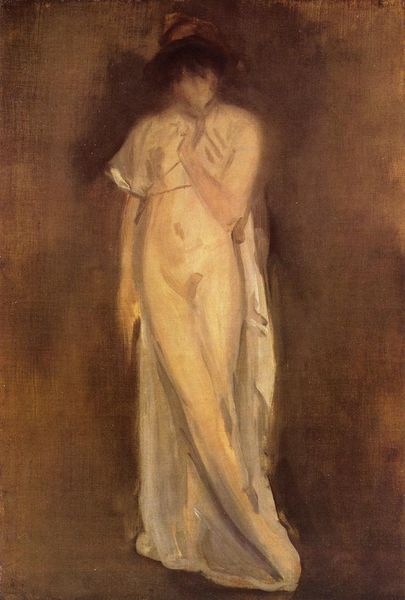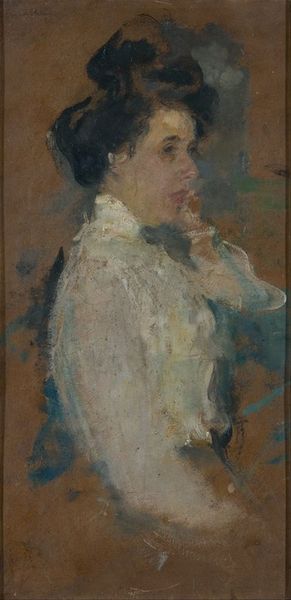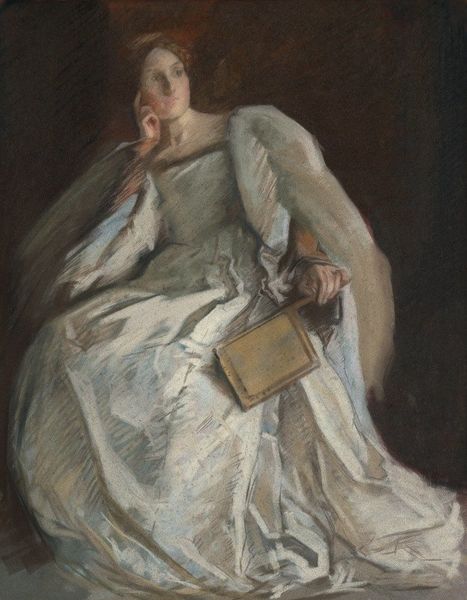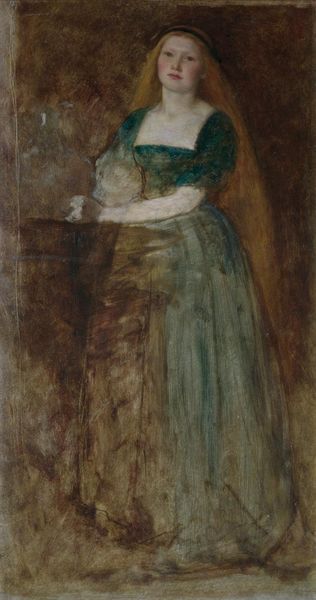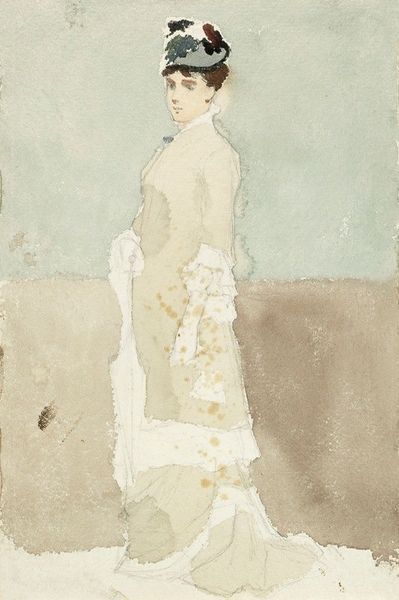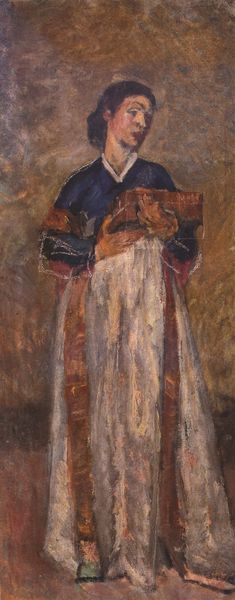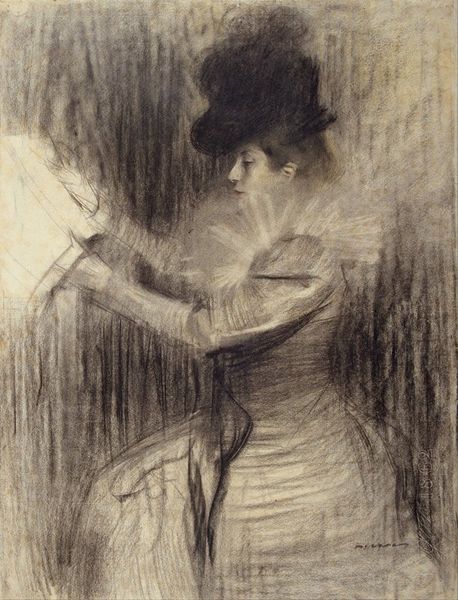
Mrs. Chase as the Señorita 1886
0:00
0:00
williammerrittchase
Albrecht-Kemper Museum of Art, Saint Joseph, MO, US
Dimensions: 43.18 x 25.4 cm
Copyright: Public domain
Editor: We're looking at William Merritt Chase's "Mrs. Chase as the Senorita" from 1886, an oil painting with a figure draped in what seems to be a fringed shawl or garment. I’m immediately struck by the somewhat subdued palette, almost a monochrome effect. It feels very posed and intentional. What do you see in this piece, considering its historical context? Curator: Beyond the surface, I see a potent negotiation of identity. The title declares "Señorita," yet we know it's Mrs. Chase, the artist's wife. Why this deliberate costuming and performance of otherness? It's essential to consider the historical backdrop: The late 19th century was marked by Orientalism and the appropriation of foreign cultures, often exoticizing them through a colonial lens. Editor: So, you’re suggesting it’s more than just a portrait; it's an engagement, maybe even a problematic one, with cultural representation? Curator: Precisely. Consider the gaze – Mrs. Chase looks directly at the viewer, seemingly self-aware. Is she complicit in this performance? Or is Chase using the painting to comment on societal fascinations with the "exotic?" It prompts a crucial question: Whose gaze are we seeing, and who is being observed? Furthermore, we can examine how gender plays into this equation. The female body becomes a canvas onto which these cultural fantasies are projected. Editor: That shifts my understanding of it completely! It's not just a beautiful painting; it's actively participating in these complex social dynamics. I hadn't considered how much the title itself guides our interpretation. Curator: Exactly. And that’s why analyzing art through an intersectional lens enriches our understanding. By considering the dynamics of gender, race, and historical power structures, we unravel deeper, often unsettling, meanings within seemingly simple portraits. What was your initial reaction now? Editor: I initially saw elegance, now I also recognize a mirror reflecting societal attitudes that still resonate today about appropriation. Curator: Precisely, and that's the enduring power of art.
Comments
No comments
Be the first to comment and join the conversation on the ultimate creative platform.

